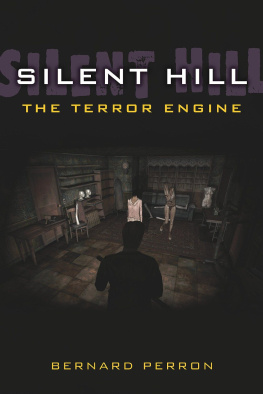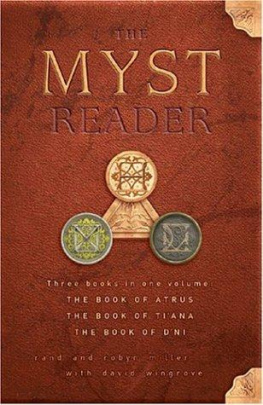Acknowledgments
First, I would like to thank the Miller brothers and Cyan Worlds (formerly Cyan); Myst (1993) and Riven (1997) are among my favorite games, and I have come to appreciate them even more during the writing of this book. I would also like to thank Warren Robinett for technical information, Tom Krenzke for reference assistance, and especially Richard RAWA Watson, Cyan Worlds programmer and Dni historian, for graciously answering my many questions, reading the manuscript, and loaning me his copies of The Manhole (1987) and Cosmic Osmo (1989) for research purposes. Thanks should also go to Matteo Bitanti and Costa Nolan, who published an earlier version of this book in Italian in 2006, and to Thomas Dwyer and his team at the University of Michigan Press for the current version. Finally, I must thank my wife, Diane, and sons Michael, Christian, and Francis for their support and patience with me as I wrote and revised this book. And, as always, thanks be to God.
Introduction
Myst (1993) and Riven: The Sequel to Myst (1997) are landmark video games not only within the genre of adventure games but within video game history as well. Not only was Myst for almost a decade the best-selling video game of all time, but it helped to introduce CD-ROM-based gaming and encouraged the sales of CD-ROM drives so that people could play it. It raised the bar for graphics, world-building, and immersive gameplay, and these aspects would be advanced even further with Riven four years later. Myst had some of the best computer-generated imagery to be found in games of its day (which were considered to be photorealistic at the time, though the meaning of the term has changed as graphics have grown more sophisticated), and location-based ambience that gradually changed as one moved from place to place. The world of Myst was large enough to make exploration one of the games main goals, and was the only goal until the games embedded narrative unfolded enough to suggest other objectives for players to attempt. The rich graphics, sound, integrated detail, sense of a three-dimensional geography, and sense of place that each location was able to invoke combined to provide an immersive gameplay experience unlike any other that players had previously encountered. The unhurried, contemplative pace, and the fact you could not be killed in the game, kept players from leaving the world for hours at a time, as they sought, bit by bit, to uncover the hidden secrets and storylines in the messages left behind and the clues in the worlds details that slowly came together as the solutions to puzzles and a tale of events. Often, puzzle-solving success opened up new areas of inquiry, both narratively and geographically, as new Ages became accessible for the player to travel to. And Riven continued all of these trends, as well as extending the storylines begun in Myst, expanding to five CD-ROMs, compared to the single one on which Myst was stored. Rivens world and its design and puzzles were even more integrated with its storyline than Mysts were, and were even more difficult, and enigmatic, as a result.
In an industry known for games centered around shooting, fighting, racing, conflict, and high-speed action, Myst and Riven stood out as something new and different, games in which contemplation was valued and mood and atmosphere were important, evoking subtler emotions than most games were capable of doing. Despite this difference, both games were highly successful and proved to be crossover games, appealing to women as well as men, and audiences of a variety of ages from children to the elderly. CD-ROMs were clearly becoming the medium for games, displacing cartridges and diskettes, and game worlds would have to grow to keep up with players expectations. A few years later, massively multiplayer online role-playing games (MMORPGs) would begin to appear, with large, explorable worlds far more enormous than those of CD-ROM-based games. Myst and Riven had set new standards and raised expectations, and the adventure genre, and video games in general, would never be the same.
Chapter 1
The Myst Phenomenon
The first time I encountered Myst was at the 1994 Digital World Expo in Los Angeles. A back room, away from the noise of the main convention halls, was lined with software booths where companies were promoting and hyping their latest products. Among them one vendor area stood out not for what it had, but for what it lacked: the lighting was minimal, almost dark, and there was no one to answer questions, not even a booth for that matter, just three white pedestals with computers on them, running the same program. The only signage was a white card that simply said MYST with no further explanation. Each computer displayed a different screen from the game, wherever the last participant had left off. Drawn by curiosity, conference attendees wandered into the quiet space and attempted to find out what exactly this low-profile piece of software was, an experience very much like the game itself, with no directions or obvious objective, just the free exploration of a contemplative landscape. And I (along with many others, no doubt) was hooked.
In 1993, the same year Jurassic Park brought photorealistic computer-generated creatures to the big screen and the World Wide Web became worldwide on computer screens, Myst appeared and quickly became the best-selling computer game of all time. (Of course, to call Myst a game implies a broad definition of the word, as Myst is perhaps better described as a single-user interactive virtual environment; there was no term to cover it at the time, and game was more specific than software.) Initially inspired in part by Jules Vernes novel The Mysterious Island (1874), at least for its tone and setting, Myst was created by Rand and Robyn Millers company Cyan (now Cyan Worlds) and released by Brderbund on September 24, 1993, for the Macintosh, with an IBM-compatible version available the following March. By April 1994 it had already sold 200,000 copies, a phenomenal amount considering that most CD-ROMs of the time were fortunate to sell in the tens of thousands. By January 1995 Myst had sold 500,000 copies, and sales would reach a million five months later. By June 2001 it had reached 5.5 million copies.
Nine years is an amazingly long time to remain number one in a medium that is growing so fast, both aesthetically and technologically. What accounts for Mysts longevity? Myst was, at the time, a unique computer game experience, and its lush (for 1993) imagery gave it a different feel and more atmosphere than the typical video games of the day. Perhaps as important was Mysts crossover appeal. The success of many of the best-selling games throughout video game history, including PONG (1972), Pac-Man (1980), Super Mario Bros. (1985), Myst (1993), and The Sims (2000), has been due in part to their widespread appeal and ability to reach people outside of the typical audience in the video game market. Myst, like the other four games just mentioned, was also nonviolent and easy to play, and, unlike many games of its day, it was available on a variety of platforms, including Sony PlayStation, Sega Genesis, Atari Jaguar, and both Macintosh and IBM computers. Mysts system requirements allowed it to be played on a wide variety of machines; since its images were all pre-rendered, high processor speeds and graphics cards were not as crucial as they were for games that rendered their graphics in real time.
Mysts approach to graphics was another reason for its success. With all its imagery pre-rendered,

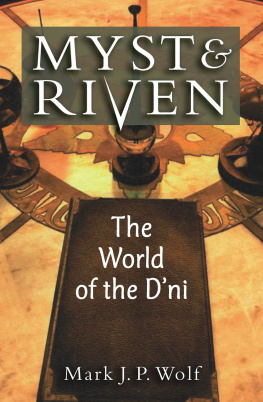





![Mark J. P. Wolf (editor) - Encyclopedia of Video Games: The Culture, Technology, and Art of Gaming [3 volumes]](/uploads/posts/book/279290/thumbs/mark-j-p-wolf-editor-encyclopedia-of-video.jpg)
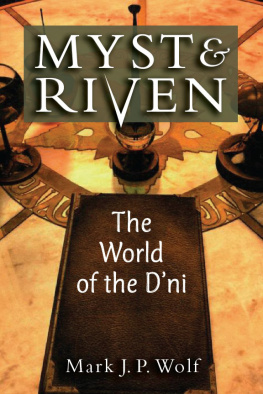
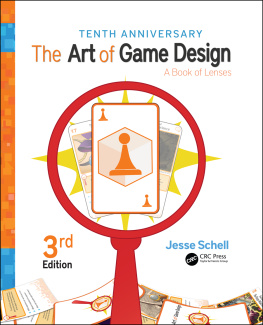
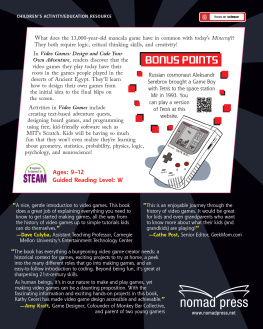
![Ethan Ham [Ethan Ham] - Tabletop Game Design for Video Game Designers](/uploads/posts/book/119417/thumbs/ethan-ham-ethan-ham-tabletop-game-design-for.jpg)
